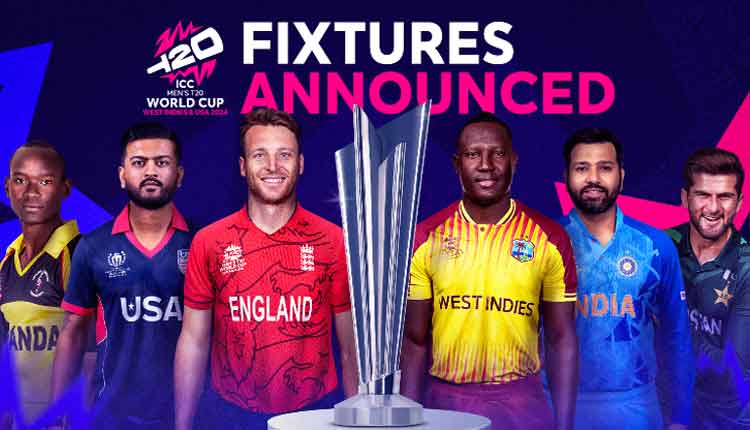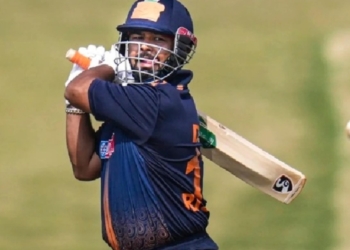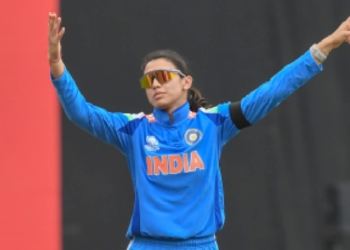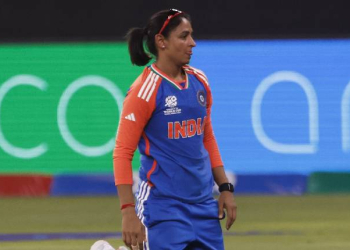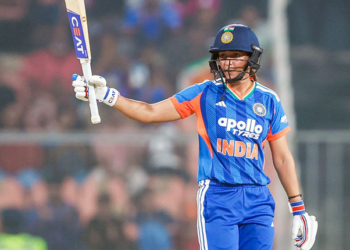New Delhi: The ninth edition of the Men’s T20 World Cup will be the biggest event in the tournament’s history, with the number of participating nations going from 16 to 20 teams.
The 55-match competition will be held from June 1-29 in nine cities of the West Indies and USA, with many eager to see if the game can truly become the global sport it has aspired for a long time, especially in the crowded American sporting landscape.
IANS spoke exclusively to Fawwaz Baksh, the tournament director of the 2024 Men’s T20 World Cup, about the challenges in preparing for the highly-anticipated tournament, the work done in the existing venues and creating a temporary 34,000-seater cricket stadium in New York.
Q. What have been the challenges in preparing for hosting the Men’s T20 World Cup in the West Indies and USA?
A. Well, it’s not actually two countries. It’s seven countries because the West Indies comprises a bunch of member nations. In the West Indies, the tournament is being hosted in Guyana, Trinidad, Barbados, St. Lucia, Saint Vincent, Antigua, apart from three venues in the USA. So, it’s seven countries hosting the tournament in nine venues. The challenges are always going to be the same no matter where you host the tournament.
But in England or Australia, there are multiple venues which are hosting, and each country has their unique way of doing things. Again, the West Indies-USA does not differ from that. But the great thing is that we have good relationships with all our stakeholders and governments. So, while we may be different countries, we all have the same objective and goal.
We know what the challenges are, or what the nuances of hosting the tournament in every country and we’re well equipped to deal with those things. But the biggest challenge would be dealing with the movement of the teams across all those countries and ensuring that the experience that they have in one country is replicated in another, which basically means consistency of services.
The one thing though we learnt from Covid-19 was it taught us ways of getting things done in challenging situations. Like tackling a different and logistically challenging tournament like this is something that we are now prepared to handle.
We have great relationships with our suppliers and stakeholders to get charter services, the hotels and all other logistical services we need. So while it’s challenging, it’s something that we have done for many, many years, and through great relationships, we’re going to achieve it.
Q. How has been the work of upgrading the existing venues going on ahead of the competition, especially in the USA?
A. It’s something actually I’m very proud of – to see how much our governments in the West Indies have stepped up towards this tournament. We first held a World Cup in 2007 (Men’s ODI), where we didn’t have venues that met ICC standards. So we built, at that time, nine venues in the West Indies.
But it’s now almost two decades since we built our venues and each government is putting in all the necessary work into the venues to meet the expectations of ICC, players coming in and for the fans who will come to the stadiums in West Indies. Again, in the USA, it’s a new tournament, as cricket is not something that is at the tip of everybody’s tongue, though MLC has been played.
Thankfully, Broward County has had a cricket stadium since 2007, which has been used for seven international matches. We have put in some hospitality seats – all of them are temporary – just to make sure it meets ICC requirements. We are supplementing the permanent upgrades with temporary ones to make sure the broadcasters and cricketers have great facilities to use.
It needs a little more work to get up to the world-class standard and the organisation is helping it reach there. Regarding Dallas, it’s a great stadium, and there’s a lot of good cricket enthusiasm due to MLC 2023. About the venue in New York, that’s something that has never been done in cricket before. We want to make sure that when we introduce cricket into the USA, we make an impact.
Q. Particularly speaking about New York, which you term it as a mega structure, it’s going to be a temporary venue at Eisenhower Park and a lot of work is still left to be done. How confident are you about the venue living up to the standards for this big competition in June, especially with it slated to host the highly-anticipated India-Pakistan clash?
A. It’s the first time we, ICC or anybody, has ever built a cricket stadium in such a short period. As I speak, the groundwork is being done there to prepare the field and pitches. All the equipment and hardware are coming in to build that mega structure. We have the support of Nassau County in New York, who are providing us with the assistance needed to get such a monumental task done. So it’s a lot of effort, but with the collaboration of all governments in the West Indies and USA, we’re making it happen.
The thing is, something like this has never been done at cricket. It’s been done at so many sports across the world when Formula One came to Miami. There’s no area of Formula One stadium – there is just temporary infrastructure that went in a moment’s notice. Same is with golf tournaments that happen all across the USA. There’s no stadium for those things – so that’s been put in temporarily.
We are building a cricket stadium for the first time in such a short period, but it’s no stranger to the companies that we have contracted to build it. They have a wealth of knowledge about how to build a stadium in a short time. We’ve hired a design company that has experience of building stadiums, and temporarily, too. So we brought all those big players to this tournament, who are no stranger to doing these things.
While it may seem unrealistic that we’re doing it in a short time, it’s actually strategic. You can’t build a stadium, like I would sit there for a long time and not use it later. But it costs us money to keep it there. The idea is to finish it in a couple of weeks before the tournament begins so that we can have maximum economic benefit from a structure that huge.
The key to starting all the stuff was through the board of governors at Nassau County. They have provided us with the space we needed and went through all the legalities to ensure that we can build a stadium. We’re past that stage and now we’re confident of the supplies that we have to build our stadium, which is going to be big.
(IANS)




